-
The Panama Hat: history and future
The Panama Hat, the famous white hat with the characteristic black band, is made of very thin straw from the toquilla palm which grows in the tropical coastal area of Ecuador. These hand woven and lightweight hats are comfortable to wear, look great and are ultimately a fashionable and timeless top product for both ladies and gentleman. And what makes it even more interesting, the panama hat has a very rich history. If you are interested in buying one, you should have a look here.
The Panama Hat is a very special product of Ecuadorian descent, which was recently recognized by UNESCO. In December 2012, the traditional method of weaving of the Ecuadorian toquilla straw hat was inscribed on to UNESCO's Representative List of the Intangible Cultural Heritage of Humanity.
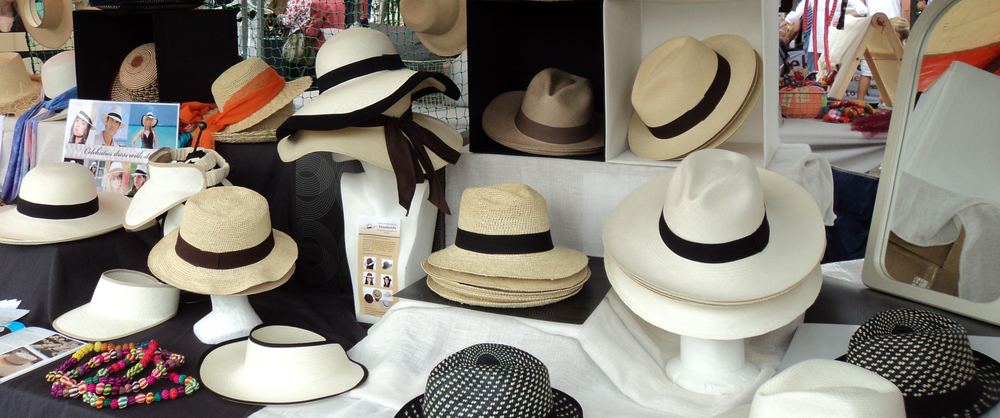
Panama hats, or 'Sombreros de paja toquilla' in Spanish, are available in many styles.
Some History
The Panama hat for many years has been an elegant and timeless fashion item that was worn by many famous people, such as royality, presidents, actors and musicians. The internationally known name does, however, totally neglect the original home country of the Panama hat: Ecuador! Subsequently, a frequently asked question is why "El Sombrero de Paja Toquilla" (as the Ecuadorians call the hat) is named "Panama hat". That's an interesting story.
For thousands of years, pre-Inca cultures in the area which today is known as Ecuador practised the art of weaving 'paja toquilla’, the straw of the toquilla palm plant. Out of this material, they wove elongated headgear, which however bore no resemblance in shape to the present Panama hat.
The Spanish 'conquistadores' conquered without much resistance the once mighty Inca Empire at the beginning of the sixteenth century. In 1534, Inca king Atahualpa was captured and then killed. Atahualpa was born in Tomebamba, the present-day city of Cuenca. That city is coincidentally the present-day center of Panama hat production.
The Spaniards were impressed by the fine weaving, which the Indians in the conquered territories used for their headgear. They even thought the hats were made of bat skin, because of the extremely detailed structure. However, it still took about three hundred years before the special weaving technique became known worldwide.
In the nineteenth century, smart businessmen began to export hats from Ecuador. At that time, hats of toquilla straw were produced exclusively in the coastal region of the now newly independent Republic of Ecuador. In particular, the town of Montecristi in the province of Manabi was (and is still!) famous for its high quality hats. Still, the best 'extrafino's' come from that place and are even called ‘Montecristi’s’.
The export of the hats progressed very strongly in the nineteenth century. For that reason, in 1836 people from the city of Cuenca in the southern Andes province of Azuay started to compete with the hat weavers in the coastal region. The city council wanted to give the local economy a boost and established a local hat factory. In the following years, Cuenca established itself as the international center of the panama hat industry.
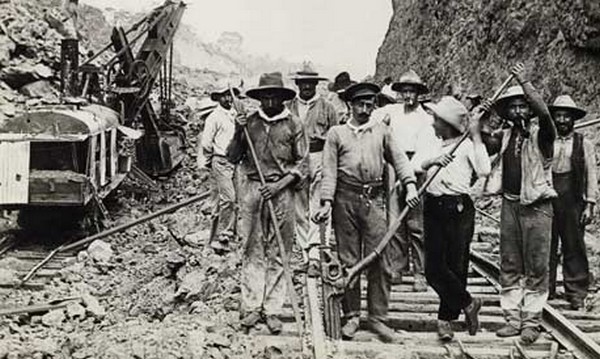
Construction workers, many of them wearing a panama hat, during construction of the Panama Canal in the 19th century.
From the mid-nineteenth century the production of the hats soared enormously. Meanwhile, in the Central American country of Panama, a thousand kilometers north of Ecuador, the construction of a canal started that would form a link between the Atlantic and Pacific Ocean.
The conditions under which the workers had to dig the Panama Canal were difficult. It was hot and humid and the sun was their worst enemy. Hats were indispensable for the American workmen, who bought the Ecuadorian-made straw hats from the local market. When they went back to the U.S., they took the hats back with them and the name "Panama Hat" was born!
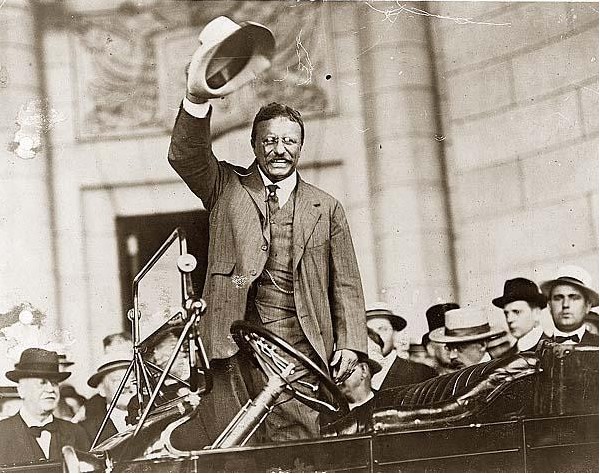
The American president Theodore Roosevelt.
The name ‘Panama hat’ and the product itself became known worldwide when celebrities started to wear them. U.S. president Theodore Roosevelt wore a Panama hat during his visit to the construction site of the Panama Canal in 1906. A photo of Roosevelt wearing a Panama hat even appeared in the New York Times.
In the decades that followed many celebrities, such as King Edward, Winston Churchill and Ernest Hemingway wore the hats. "Panama hat" quickly became the name people all over the world called the hat. All over the world,that is except in Ecuador. Proud as they are, for Ecuadorians the name of the hat still remains 'Sombreros the Paja Toquilla'.
Today, the Panama hat is experiencing a revival. In many different forms, the hat can be seen on the streets, beaches, clubs or wherever. Also many Hollywood stars, like Sean Connery, Tom Cruise, Cameron Diaz and Emma Watson, have been spotted with ‘Panama's’. Although a lot of fake paper-made ‘Panama hats’ are sold on the market, many people acknowledge and appreciate the quality and beauty of the one and only original Panama hat from Ecuador.
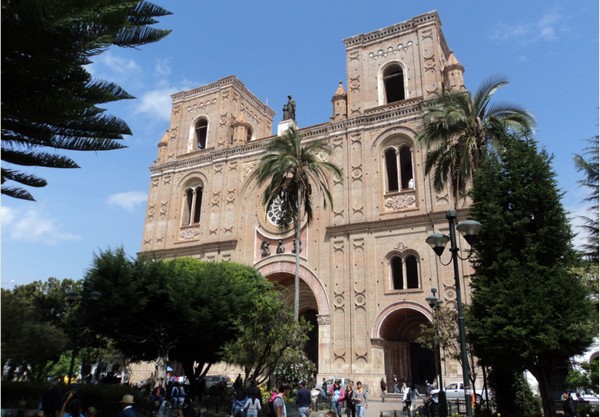
The New Cathedral of Cuenca, nowadays the center of the panama hat industry.
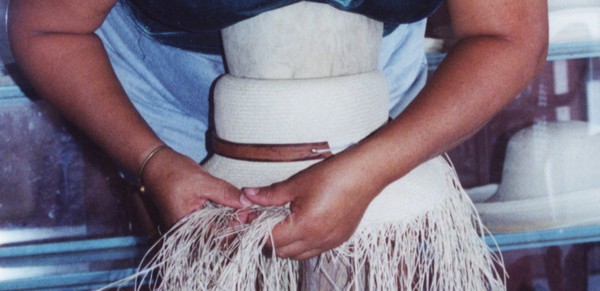
The Panama Hat is a very special product of Ecuadorian descent, which was recently recognized by UNESCO. In December 2012, the traditional method of weaving of the Ecuadorian toquilla straw hat was inscribed on to UNESCO's Representative List of the Intangible Cultural Heritage of Humanity.

Panama hats, or 'Sombreros de paja toquilla' in Spanish, are available in many styles.
Some History
The Panama hat for many years has been an elegant and timeless fashion item that was worn by many famous people, such as royality, presidents, actors and musicians. The internationally known name does, however, totally neglect the original home country of the Panama hat: Ecuador! Subsequently, a frequently asked question is why "El Sombrero de Paja Toquilla" (as the Ecuadorians call the hat) is named "Panama hat". That's an interesting story.
For thousands of years, pre-Inca cultures in the area which today is known as Ecuador practised the art of weaving 'paja toquilla’, the straw of the toquilla palm plant. Out of this material, they wove elongated headgear, which however bore no resemblance in shape to the present Panama hat.
The Spanish 'conquistadores' conquered without much resistance the once mighty Inca Empire at the beginning of the sixteenth century. In 1534, Inca king Atahualpa was captured and then killed. Atahualpa was born in Tomebamba, the present-day city of Cuenca. That city is coincidentally the present-day center of Panama hat production.
The Spaniards were impressed by the fine weaving, which the Indians in the conquered territories used for their headgear. They even thought the hats were made of bat skin, because of the extremely detailed structure. However, it still took about three hundred years before the special weaving technique became known worldwide.
In the nineteenth century, smart businessmen began to export hats from Ecuador. At that time, hats of toquilla straw were produced exclusively in the coastal region of the now newly independent Republic of Ecuador. In particular, the town of Montecristi in the province of Manabi was (and is still!) famous for its high quality hats. Still, the best 'extrafino's' come from that place and are even called ‘Montecristi’s’.
The export of the hats progressed very strongly in the nineteenth century. For that reason, in 1836 people from the city of Cuenca in the southern Andes province of Azuay started to compete with the hat weavers in the coastal region. The city council wanted to give the local economy a boost and established a local hat factory. In the following years, Cuenca established itself as the international center of the panama hat industry.

Construction workers, many of them wearing a panama hat, during construction of the Panama Canal in the 19th century.
From the mid-nineteenth century the production of the hats soared enormously. Meanwhile, in the Central American country of Panama, a thousand kilometers north of Ecuador, the construction of a canal started that would form a link between the Atlantic and Pacific Ocean.
The conditions under which the workers had to dig the Panama Canal were difficult. It was hot and humid and the sun was their worst enemy. Hats were indispensable for the American workmen, who bought the Ecuadorian-made straw hats from the local market. When they went back to the U.S., they took the hats back with them and the name "Panama Hat" was born!

The American president Theodore Roosevelt.
The name ‘Panama hat’ and the product itself became known worldwide when celebrities started to wear them. U.S. president Theodore Roosevelt wore a Panama hat during his visit to the construction site of the Panama Canal in 1906. A photo of Roosevelt wearing a Panama hat even appeared in the New York Times.
In the decades that followed many celebrities, such as King Edward, Winston Churchill and Ernest Hemingway wore the hats. "Panama hat" quickly became the name people all over the world called the hat. All over the world,that is except in Ecuador. Proud as they are, for Ecuadorians the name of the hat still remains 'Sombreros the Paja Toquilla'.
Today, the Panama hat is experiencing a revival. In many different forms, the hat can be seen on the streets, beaches, clubs or wherever. Also many Hollywood stars, like Sean Connery, Tom Cruise, Cameron Diaz and Emma Watson, have been spotted with ‘Panama's’. Although a lot of fake paper-made ‘Panama hats’ are sold on the market, many people acknowledge and appreciate the quality and beauty of the one and only original Panama hat from Ecuador.

The New Cathedral of Cuenca, nowadays the center of the panama hat industry.







